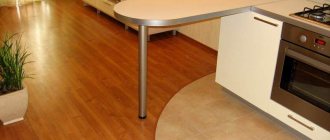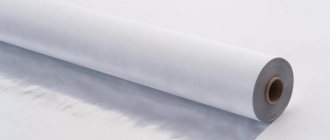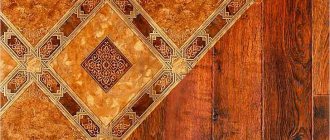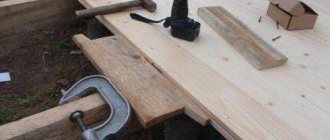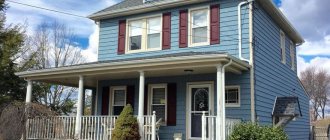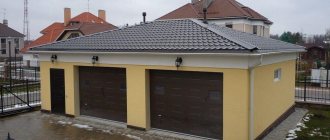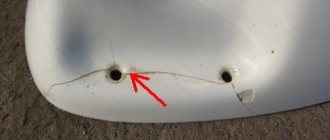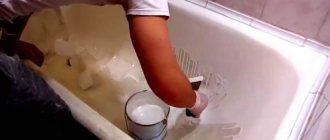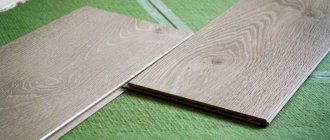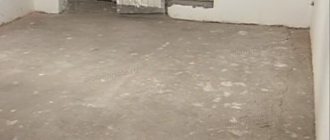What is better laminate or parquet board? In this article I will leave a detailed review and personal comparison and opinion, as a craftsman, about the performance properties of materials, the durability of the coating, and the comfort of the products. The products being compared have various pros and cons, a table of which is given here.
Preface
At the turn of the 2000s, after finishing his military service, he got a job in a store selling doors and parquet. It so happened that a representative of the Kronotex plant from eastern Germany came to visit the neighboring, large company at that time, which has now sunk into oblivion.
Our company, which had also been out of business for a long time, was invited as dealers to a presentation of laminate flooring. We were seated on chairs and we listened through an interpreter to what the German gentleman was saying.
I don’t remember what he said, it doesn’t matter now. Then we, the department salespeople, were asked to ask questions. I raised my trembling hand up and, afraid to seem awkward, asked: “How many years will laminate flooring last?”
The gentleman answered something, to which I said that I have piece parquet at home. There was laughter in the audience, they say, they sell laminates there, but we have real parquet. But everyone understood that the laid solid oak was an old, worn-out covering, laid in every second apartment in the city. I don’t know what the burgher was thinking, but he smiled tactfully.
By what criteria will we choose the material?
The convenience and lifespan of flooring are influenced by the following indicators:
- density
- environmental friendliness
- thermal conductivity
- sound insulation
- moisture resistance
- specifics of care
- repairability
Depending on the type of room, family size and other factors, the weight of the characteristics will be different. What is critical in one case may be neglected in other circumstances.
In addition, the cost of the flooring will influence the final decision. We will not ignore this issue either.
But let's take things in order. First of all, let's look at what kind of materials they are - parquet boards and laminate.
Advantages and disadvantages of parquet
Like any material, parquet flooring has its pros and cons, which must be taken into account when choosing.
USEFUL INFORMATION: Improved wall plaster: we follow the requirements of SNiP
Advantages of parquet boards:
- Naturalness of the material. A wooden floor makes a room warm, cozy and lively; the natural, unique pattern of wood is mesmerizing.
- Possibility of restoration work. Depending on the thickness, the front layer of the board can withstand from 1 to 3 sanding cycles and, if necessary, is covered with a new layer of varnish.
- Long service life - at least 15 years with proper care.
- Relatively easy to maintain - standard wet cleaning and regular use of special polishes are sufficient.
- Easy to install. The locking connection makes it easy to install and dismantle individual elements.
- Antistatic. The varnish coating does not attract dust, hair and animal fur.
- Unlike block parquet, parquet boards do not need to be scraped and sanded after installation; they have a factory coating or impregnation.
Minuses:
- Wood is subject to mechanical damage: deformations, dents, scratches. Strength varies depending on the type of wood used in the top layer.
- There is a possibility of delamination.
- Increased requirements for the surface of the base - it must be clean and perfectly leveled.
- Afraid of changes in temperature and humidity.
- The use of chemical cleaning agents is prohibited.
- When laid without gluing, gaps may form between the boards over time.
Parquet board
Parquet board (photo No. 2)
Parquet board is not the same as parquet. The latter is a piece of material made from solid natural wood, while parquet board, like laminate, is a multi-layer coating.
Traditionally, it consists of the following layers (from bottom to top):
➠ Stabilizing layer.
Serves to increase the stability of the material. Made from veneer or plywood. The layer thickness is 1.5–2 mm.
➠ Support layer
The middle layer, up to 9 mm thick, is usually made from soft coniferous wood, less often from industrial oak. It is located perpendicular to the stabilizing and upper layers - this makes the structure more stable.
➠ Top layer
It consists of a thin layer (0.5 to 6 mm) of hardwood. It can be oak, beech, ash, etc.
Oil or protective varnish is applied on top.
!
Parquet board is not parquet. Like laminate, it is a multi-layer coating.
The product is strong but flexible, up to 2.5 cm thick. It is attached using a system of grooves (floating method), glue or fasteners.
The first candidate is parquet
Parquet board consists of several layers of natural wood carefully glued together. The attractive appearance of parquet is given by the pattern applied to the top layer of the product. The lowest layer of the board is 1-2 mm thick. For its manufacture, pine or spruce plywood is used. Next comes the middle layer, made of narrow pine or spruce planks (slats). They are glued across the bottom layer. This design gives the parquet additional strength.
The front layer, consisting of valuable wood species, is glued on top. Beech, ash, and oak are used in its production. The thickness of the top layer is 3-4 mm. A protective coating is applied to the front part of the parquet in several layers. Due to the fact that the middle slats are located across the top and bottom layers, a durable structure is created.
The coating can be oil or varnish. For example, when processing Barlinek parquet boards, special compounds are used that can be used to make the surface matte, glossy, or emphasize the natural structure of the wood.
The structure of the parquet board
Advantages of parquet:
- made from natural wood;
- easy to install thanks to the locking mechanism;
- easy to care for, just wipe with a damp cloth;
- can be restored by grinding;
- non-static;
- long service life, with proper installation and maintenance the service life is 35 years.
Disadvantages of parquet:
- instability to moisture;
- loses color when exposed to the sun;
- absorbs odors;
- scratches easily.
We will tell you how to properly lay parquet, all the components of this process, as well as various options for preparing and leveling the screed in a special article on our website:.
Laminate
Laminate structure (photo No. 3)
This is also a multilayer material. Its design includes:
➠ Bottom, stabilization layer.
Serves to protect the panels from moisture that can penetrate from below. Prevents panel deformation. In the cheap version, this layer is missing, which negatively affects the quality of the coating.
The material perfectly tolerates various operating conditions:
➠ Middle, load-bearing layer.
High-density fiberboard (HDF) is used as the load-bearing base. Less commonly, MDF panels (medium density fiberboard). Separately, it is worth highlighting quartz-vinyl laminate, whose main layer consists of PVC with the addition of quartz sand.
➠ Top, decorative layer.
This is a thin front layer with a pattern. It recreates wood texture and structure.
➠ Protective layer.
The overlay (top layer) is a transparent polymer film. It protects the coating from abrasion, ultraviolet radiation and other negative influences. The overlay determines the texture of the panels, the quality of embossing, and the degree of gloss.
The average thickness of the product is 12 mm. The panels are mounted using a floating or adhesive method.
Comparison of parquet boards and laminate by density
Comparison of parquet boards and laminate by density (photo No. 4)
The density of the floor covering is one of the most important properties. It largely determines the wear resistance and life of the product. Which is better: parquet (parquet boards) or laminate?
The hardness of a parquet board corresponds to the hardness of the wood from which it is made. For example, the density of oak is 750 kg/m3. It can fluctuate, even in different areas of the same panel.
The hardness of the laminate depends on which board is used for the supporting layer. The density of an HDF panel is 830-970 kg/m3, while that of an MDF panel is lower. Accordingly, the panels are divided into classes: 21, 22, 23 (household laminate), 31, 32, 33, 34 (commercial).
The class of the material determines what rooms it is intended for, how many people can walk on it and how many years it will last. The higher the class, the stronger and more durable the coating.
Another important quality indicator is the resistance of the top layer to friction and squeezing. This property depends on the quality of the overlay: a cheap laminate quickly scratches and wears out, while a higher quality laminate lasts quite a long time without changes. Vinyl coating has maximum durability: it will not be damaged by heels, furniture legs and wheels, or fallen objects.
In parquet boards, the protective function is performed by the varnish coating, but its density is lower than that of its competitor. Therefore, in terms of hardness and wear resistance, choosing parquet or laminate
, we can assume
that the second one is better for the floor.
Performance Comparison
Comparing the performance characteristics of the two materials will allow you to determine how parquet boards differ from laminate during operation and choose the most appropriate flooring option. We will carry out the analysis according to the following criteria:
- price per 1 m2 of material;
- costs for laying 1 m2;
- difficulty of assembly;
- requirements for the subfloor (screed);
- possibility of dismantling (disassembly);
- lifetime;
- flammability;
- wear resistance;
- resistance to fading;
- which is stronger;
- waterproof;
- heat transfer resistance coefficient (thermal conductivity);
- noise insulation properties;
- environmental cleanliness;
- appearance;
- which gets dirty faster;
- how convenient it is to care for;
- Possibility of installing a “warm floor” system.
Price
When choosing flooring, price is always the first consideration. Therefore, let’s compare what is cheaper to buy: laminate or parquet boards.
- A budget class laminate panel can be purchased for 260 rubles/m2 or more, a premium class for 840-1500 rubles/m2. The most expensive material of this type was presented by Terhuerne (Germany) - 3005 rubles/m2;
- Parquet boards have a greater range in prices: from 1140 rubles/m2 to 13800 rubles/m2. In the first case, the manufacturer is Blanko (Russia), in the second, the German Terhuerne.
Conclusion: according to this criterion, laminate has an undoubted advantage.
Which is cheaper to install?
In addition to the cost of flooring, floor assembly has a significant impact on family finances. Here it is important to know what is more expensive to lay - slats or parquet boards - in order to choose a cheaper option.
To lay laminate flooring “in a hurry” you can hire specialists for 250-400 rubles/m2; laying planks will cost 350-500 rubles/m2.
Conclusion: installing laminate is cheaper, so it has an advantage. However, when performing repair work on your own, the materials are completely equal.
Installation
The materials in question are laid using the “floating floor” method using interlocking joints. This assembly method is simple and can be done on your own.
Conclusion: in terms of assembly complexity, the materials are completely equal.
Which material is more demanding on the base?
Parquet boards and laminate can be laid on a flat and durable base surface. Any irregularities affect the performance characteristics of the floor covering. The influence of tubercles up to 2 mm is neutralized by the substrate (it can be old linoleum). If the height difference is more than 3 mm, the screed is filled with self-leveling mixtures.
Conclusion: according to this criterion, the materials have complete parity.
Which floor is easier to disassemble?
You will have to tinker with both laminate and parquet boards during dismantling. It is especially difficult to remove parquet boards glued to the base.
Conclusion: it’s still easier to disassemble a laminate floor.
Which is more durable?
Laminate manufacturers declare the service life of laminated floors to be 10-15 years. Practice shows that lamella flooring serves a family for an average of 20 years, and then must be replaced, since it is impossible to restore a surface damaged during use.
Parquet boards have a service life of at least 30 years. However, such a floor can actually last for 40-80 years with proper care and timely sanding followed by application of varnish. Let's explain with an example. You can sand the parquet board up to 4 times. The average time between restoration work is about 12 years with intensive use. Then the service life of the board is 60 years (12 x 5).
Conclusion: parquet boards have almost a 3-fold advantage.
Flammability
Both materials burn. However, the process occurs differently: laminate does not support open combustion - it smolders, releasing harmful substances, and a parquet board burns like a match, but without releasing toxic combustion products into the air.
Conclusion: in terms of fire safety, laminate has a better position.
Which material is more wear-resistant?
When assessing materials for wear resistance, it is necessary to make one clarification: what time period was taken for comparison. So, in the short term, laminate has a clear advantage. This material better withstands intense walking, targeted impacts and exposure to abrasive materials such as sand.
In the long term, parquet boards are better in terms of wear resistance, since they can be completely restored after damage to the surface.
Conclusion: the protective coating of laminate wears out more slowly than the protective layer of parquet boards.
Resistant to fading
The varnish on the board becomes lighter when exposed to sunlight. Therefore, it is necessary to regularly apply a new, very thin layer of protective coating over the entire surface of the floor, without removing the previous one.
Budget laminate options do not have a special film that protects the decorative layer from fading. More expensive models have it and the floor does not lose its original color throughout the entire period of use.
Conclusion: laminate resists fading better.
Which is stronger
The strength criterion includes 3 indicators: resistance to dynamic and static loads, as well as various mechanical impacts. Here, in all respects, laminate is the undoubted leader. This is explained by the fact that the protective film of the lamellas is several times harder than wood (made from melamine resin and aluminum dioxide).
As a result, laminate flooring can better withstand thin heels, heavy objects falling, and heavy furniture. There is only one danger here: two furniture legs get caught on one lamella, as a result of which its lock breaks.
Conclusion: laminate is much stronger.
Which withstands high humidity better?
Laminate and parquet boards behave the same way in direct contact with water: they are deformed and destroyed. But in conditions of high humidity, the parquet board practically does not change its linear dimensions.
This is due to two factors: the perpendicular placement of fibers in adjacent layers of the board, which protects it from swelling when slightly wet, and the very low level of hygroscopicity of dried wood. The core of the laminate absorbs moisture from the air very intensively. For deformation, damp weather with open windows in an unheated room for 2-3 days is enough.
Conclusion: in a bathroom where contact of the floor with water is inevitable, laying a laminate or parquet floor is not recommended. In the kitchen, the lamella covering will be used in extreme conditions, which will shorten its service life. In all other rooms of the apartment or house, both materials behave identically.
Which is warmer
Due to its greater thickness and lower thermal conductivity, parquet boards retain heat better than HDF lamellas. And it is also “warmer” in tactile sensations. But the difference is not too big. Much depends on the type of wood used to make the board.
Conclusion: laminate retains heat worse, although, judging by the reviews on the forums, in winter it feels like a warmer floor.
Which is quieter?
In assessing the level of noise protection, expert opinions were divided. Some believe that the materials are completely equal in this indicator, others prefer parquet boards. It is not so noisy and better protects the apartment owners from the noise of neighbors below. And laminate flooring will always, even with ideal sound insulation, relay the clicking sound of thin heels to all its neighbors.
According to the editors, based on their own experience, the board not only absorbs all types of extraneous noise well, but also practically does not transmit internal sounds to the walls and ceilings. She is one of the most silent sexes.
Conclusion: parquet boards have an advantage in terms of noise insulation.
Which gets dirty faster?
Due to static electricity that accumulates on the protective film of the lamellas, the laminate floor becomes dirty faster. But this disadvantage, oddly enough, has its own advantage: less dust settles on walls, shelves, lamps and various decorative elements. Washing the floor is several times easier than wiping dust from other objects.
Conclusion: experts give a paradoxical assessment of the current situation and give preference to laminate.
Which is easier to wash?
It is easy to care for floors made from the materials in question. If necessary, neutral detergents can be used. The only limitation: both the parquet board and the laminate need to be washed with a well-wrung out cloth. In practice, a parquet floor with freshly applied varnish is first washed with a damp cloth, and then rubbed with a strongly wrung out cloth. The parquet flooring can withstand this type of care until microcracks appear in the varnish coating.
Conclusion: complete equality is observed.
Environmental friendliness
Theoretically, parquet boards have an advantage in terms of environmental friendliness: they are made from natural materials and do not contain formaldehyde resins. In practice, there is no difference, which is confirmed by the E1 safety mark assigned to both materials in Europe.
Conclusion: in terms of safety for human health, the materials are equal.
Appearance
Analyzing the design of compared materials, it is impossible to give an unambiguous assessment of the appearance. On the one hand, the choice of color, pattern and texture of the lamellas is much greater, which makes it possible to choose a suitable laminate design for any style of apartment design, from classic to ultra-modern trends (high-tech, eco-style).
On the other hand, natural wood looks noble and stylish in appearance next to gilding, a marble fireplace, stucco molding, paintings on the walls and furniture made in a classic style. Another thing that adds charm to a parquet board is the absence of two identical strips in texture, while laminate flooring is full of duplicates (from 5 to 10 templates are used in production).
Conclusion: natural wood cannot be reproduced. However, the laminate also looks decent. Therefore, it is impossible to determine what is best for the floor in terms of aesthetics.
What type of material can be laid on a “warm floor”
Warm floors, which are gaining popularity, can be installed with equal success under laminate (manufacturers offer special models) and under parquet boards, as heating system manufacturers write about in their instructions. An exception to the rule is parquet boards with a thickness of 20 mm or more. Not used under “warm floor” systems and bamboo parquet. In both cases, the heat will remain below and will not penetrate into the room.
Conclusion: there are no advantages according to the given criterion for any type of sex.
Expert opinion: parquet boards are an ideal choice for people with high incomes who want to emphasize their status with expensive natural materials. At the same time, they are not embarrassed by the need for decent care of a rather capricious coating. Laminate is easier in price and maintenance, but at the same time, it is not inferior to parquet boards in design. Therefore, it will be the optimal solution for people with middle and low incomes.
Environmental friendliness of products
Environmental friendliness of products (photo No. 5)
The most environmentally friendly floor covering is natural solid wood parquet. The materials we are comparing are multi-layered. This means that their safety depends on all components, including the adhesive base that connects the layers. In the EU, these coatings belong to the same environmental class.
Cheap parquet boards may use a toxic varnish coating. In laminate, the resins that make up the adhesive base of the wood board can be harmful.
Therefore, first of all, you need to choose high-quality materials from reliable manufacturers. Required - certified. They are not harmful to health.
And yet, parquet boards hold the palm in terms of environmental friendliness.
Which is less afraid of water?
It is not obvious, but parquet boards are less afraid of water than laminate flooring. Wood has a memory effect - parquet swells from water, but after drying it restores its original shape. Having chosen a quality manufacturer, the only thing that may remind you of a flood is the darkened edges of the planks, and if you choose an oil-based coating, a washed away protective layer.
With laminate, everything is worse - HDF swells from water and does not recover after drying. After slight flooding, the edges of the laminate bend and wear out quickly. Good manufacturers make HDF boards that are denser and contain water-repellent particles, which is good at resisting water absorption, but in any case, laminate is very afraid of water.
Thermal conductivity of materials
Thermal conductivity of materials (photo No. 6)
Laminate conducts heat better than parquet boards. In other words, it heats up and cools down faster. In a house with a conventional heating system, when choosing laminate, parquet or linoleum - which is better, it makes sense to choose parquet and parquet boards. It is comfortable to walk on them barefoot even in winter.
However, these products cannot be used for heating underfloor heating. Whereas laminate is possible. In this case, high thermal conductivity becomes its advantage. The flooring warms up faster and transfers heat better to the air in the room.
Differences in repair
Parquet boards differ from laminates in the possibility of sanding instead of completely replacing the damaged plank, which most buyers never do (due to the complexity of the process). To get rid of scratches and dents, it is enough to initially lay the parquet board correctly.
If everything is done according to the rules and regulations, later you can only sand the surface and apply a new varnish - and the floor repair can be considered complete.
This leads to another difference between the types of flooring: the wear resistance of the laminate is ensured by the quality of the raw materials and production technology, while the service life of the parquet is determined by the possibility of full, repeated repairs.
Parquet flooring and laminate flooring, therefore, differ radically from the point of view of maintainability.
Sound insulation of flooring
Sound insulation of floor covering (photo No. 7)
This indicator is determined by the properties of the material, as well as the method of its installation. Let's figure out how parquet differs from laminate, which is better?
The noise insulation characteristics of natural wood are higher than those of glued material made from HDF panels. The clicking of heels, shuffling, steps, under all equal conditions, on the parquet board will be less noticeable.
However, in practice, it is “other conditions” that play a decisive role:
- How level is the floor?
- Is there a backing used? And which one?
- What kind of floors are there in the building?
- How much furniture is there in the room (if there is little furniture, the echo effect increases)?
If there is a high-quality substrate, both coatings will be comfortable in terms of noise insulation both indoors and from neighbors below. Vinyl laminate has a backing initially, so it perfectly absorbs sounds without an additional layer.
!
The sound insulation of parquet boards is higher than that of laminate. Laminate compensates for this disadvantage with the help of a backing: it is laid as an additional layer under regular panels and is already included in the vinyl.
Variety of design options
The difference between parquet flooring and laminate, as you might guess, is in matters relating to the design and appearance of the flooring. Here laminate has no equal: the buyer can choose from patterns of stones, the texture of real wood, various patterns, and even laminate flooring.
Only linoleum can compete with this type of coating in the variety of prints - its top layer is also distinguished by an incredible variety of decors.
Parquet boards, in turn, cannot boast of such an abundance of appearance options - giving wood the appearance of stone, unfortunately, is not yet possible.
However, despite the small selection, limited to real wood textures, the parquet panel looks more expensive than many other coatings due to its uniqueness and originality - prints can be repeated, but patterns created by nature itself cannot be copied.
Additional solidity of the material is added by special demarcation chamfers that separate the boards from each other.
Chamfers distinguish parquet boards from laminate
Moisture resistance of laminate and parquet boards
Moisture resistance of laminate and parquet boards (photo No. 8)
Moisture is wood's worst enemy. If it is higher than normal, the coating swells, loses appearance, strength and other properties. At low humidity, on the contrary, the parquet board can shrink and crack, which also will not make it attractive.
Sometimes it is advisable to use a humidifier to maintain the optimal humidity for the tree - 45-65%.
The moisture resistance of laminate depends on its class and composition. Cheap, low quality varieties are just as susceptible to moisture as wood. But vinyl laminate and some types of expensive coatings with HDF panels are not afraid of water. They are laid in rooms with high humidity - in the kitchen, bathroom and hallway.
Therefore, speaking about what is better - laminate or parquet in an apartment or house in terms of moisture resistance, the answer is clear: this is the first option. Moreover, in terms of this indicator, vinyl coating is confidently ahead of its competitors.
!
The moisture resistance of laminate depends on its class and composition. Cheap, low quality varieties are just as susceptible to moisture as wood. Fully water resistant vinyl laminate; it can be laid in damp areas.
How laminate works: its pros and cons
Laminate is a multilayer material, each layer of which has its own function and is responsible for a specific characteristic of the coating. Externally, the laminated board is a panel about a meter long and approximately 20 cm wide. The internal composition is as follows:
- the bottom layer, which is the base, is made of thin plastic or special moisture-resistant paper impregnated with resins. This base provides the panel with rigidity and stability;
Laminate composition
- in the middle, as a filling, they use chipboard or fibreboard, which makes up the strong frame of the panel. In addition, it provides moisture resistance and elasticity, which is so necessary for the floor covering to withstand intensive walking;
- the top, visible layer of the panel can imitate almost any surface. The variety of colors is pleasantly surprising, and the protective film allows the design not to fade and remain intact. This way the laminated surface can retain its original appearance for a long time.
The multilayer structure allows the use of laminated coating in all rooms. True, most boards continue to deteriorate from prolonged exposure to moisture, but, nevertheless, moisture-resistant laminate has already appeared on sale, the installation of which is allowed even in the bathroom.
Laminate flooring in dark colors stands out against the background of white walls.
Advantages and disadvantages of laminate
Manufacturers have awarded the laminate with many useful qualities that have expanded its wide application possibilities:
- the simplest possible method of laying the coating, accessible even for self-installation;
- Although the material can hardly be called completely environmentally friendly, nevertheless, it does not pose any danger to human health;
- laminate is fireproof. Even if it is exposed to high temperatures, fire will not occur;
- the top layer of the panels is resistant to ultraviolet rays, so over time it does not fade or lose its appearance;
- modern laminate models are equipped with a special protective film, which makes contact with water completely safe for the coating;
- It is quite difficult to leave scratches on laminate flooring. He is not afraid of heavy furniture, constant loads and sharp claws of animals.
Moisture-resistant laminate in the bathroom
However, this coating also has disadvantages:
- There is some noise when walking on laminate flooring. To eliminate this problem, additional costs are required to purchase soundproofing material for the substrate;
- It is impossible to restore damaged areas of the coating. The only solution is a complete replacement of the constituent elements.
Laminate classes: which is better for an apartment with a “warm floor” system
Which class of laminate to choose for an apartment is a rather controversial issue. Many manufacturers claim that almost any of their coatings will go well with the heating system. In fact, class 32 or 33 laminate is much better. Which brand you will prefer is another question. The main thing is that the strength and rigidity of the structure will be sufficient to withstand serious surface loads without harm to the heated floor system.
Laminate in the interior of the veranda
In addition, there is a wonderful option - a two-in-one laminate, which was produced specifically for heated floors. The system is designed in such a way that the heating elements are located between two layers - the outer one, on which you will walk, and the inner one - the substrate. This way you don’t have to select a suitable covering and flooring for it. The manufacturer has already taken care of everything.
In the process of laying such a coating, the wires of the heating elements are connected to each other, forming an integral system. This is a very convenient, although more expensive method compared to a traditional underfloor heating system.
Laminate flooring in the bedroom
How to properly care for laminate flooring
Laminate is a very sensitive material, and it also requires special care. Let's look at a few basic recommendations on how to properly care for your flooring and thereby extend its service life:
- The ideal option for laminate flooring is dry cleaning. A vacuum cleaner with a soft brush works best;
- if you still need to wash the floor with water, use a well-wrung out mop soaked in warm water;
- In relation to the laminate panels, make only longitudinal movements with the mop to eliminate the risk of water getting into the joints;
- do not use any chemically active products;
- after you have washed a certain area of the floor, dry it thoroughly with a dry cloth;
- To care for laminate flooring, you can purchase a product specially designed for this purpose.
Laminate flooring is very easy to care for
Which is better to choose - laminate or parquet boards: specifics of care
What is better to choose - laminate or parquet boards: specifics of care (photo No. 9)
A parquet board has a protective varnish layer that is thinner and less dense than a competitor's overlay. This means that it wears out faster and protects the wood itself less well.
Therefore, parquet boards require a more strict approach to care:
- The coating is afraid of moisture; it should be washed with a damp, but not wet, cloth.
- Abrasive agents and powerful chemicals are not suitable for washing.
- If liquid is spilled on the parquet, it must be removed immediately.
- From time to time the floor needs to be treated with natural wood products.
It is also not recommended to scratch laminate or pour water from a bucket on it, but in general it is easier to care for: you can wash it and use detergents (their arsenal has been expanded, but without fanaticism). Vinyl panels can even be wiped down with solvent if necessary.
!
The protective varnish layer of a parquet board is thinner and not as dense as a competitor’s overlay. This means that it wears out faster and protects the wood itself less well.
If you care for the materials correctly, they will last 2-3 decades or more.
What's more beautiful?
Parquet has an ideal appearance, each board is unique, you can feel any knot on the surface, a parquet board is no less beautiful up close than from afar. The chamfer of the parquet board is natural and continues the texture of the wood. Decorative treatments, such as deep brushing and scarring, look great because oils and even varnishes spread well, accurately repeating the relief. In addition to shiny models, there are a huge number of matte and ultra-matte models that do not have parasitic shine.
Laminate: Printed images on any laminate have insufficient detail (resolution), so when viewed from a distance of less than 1 meter, the laminate looks artificial. A more important problem is that the image does not have full coverage of natural shades; the limited spectrum of color gives off an imitation of wood, when the eye clings to the unnatural gradient of halftones. Decorative film is produced in sheets - usually about 2 m², and the laminate has a repeatability of the strips, which is noticeable to the naked eye. It is difficult to make the chamfer of a laminate natural; the edges are almost always painted with one even color due to technical limitations, which, of course, does not look natural. Alternatively, there are models with a U-shaped bevel, which shows the grain of the wood, but this bevel is not found in wood floors, so the solution is a compromise. The laminate is covered with two films that are not very elastic, so there are visual problems with simulating brushing, scarring, cross cuts and other popular wood treatments. An imitation can be done, but it will not be as subtle and deep. Another problem with films is that the laminate shines, like under glass. There are very expensive options that achieve a matte surface, but this is an exception to the general rule.
Repairability
Suitability for repair (photo No. 10)
Both coatings can be repaired, but with certain reservations. According to the expert, when it comes to the question of which is better: laminate or parquet, the latter has an advantage.
Laminate flooring can be easily repaired if the installation is carried out according to the locking principle. When the panels are glued together, the work is more difficult, but also possible.
It should be taken into account that when replacing 1-2 panels after a few years, the low-quality coating may vary in color. Good panels will not fade in the sun, so the difference will not be noticeable.
The parquet board is repaired without replacing elements - it is sanded and coated with a new layer of protective wax or varnish.
Cost of flooring materials
Cost of flooring materials (photo No. 11)
The cost of both products varies greatly. You can buy a budget parquet board or an expensive high-quality laminate. When deciding what is better - cheap parquet or expensive laminate - you should definitely give preference to the second.
A durable, certified laminate from a reputable manufacturer will cost more than the average parquet board.
Tip: Decide how important water resistance of the floor is to you. Water-repellent materials are more expensive, but are indispensable in the kitchen, bathroom or hallway.
Criterias of choice
It is believed that the main disadvantage of parquet is its higher price, but this is not entirely true. There are both materials of higher and lower quality and wear resistance, and prices differ depending on the characteristics. With equal characteristics, a parquet floor will cost more, and so will its maintenance.
If the priority is indestructibility, it is better to give preference to laminate, if natural beauty - to parquet.
If your interior is dominated by natural wood furniture, it is better to give preference to parquet; if metal predominates, you can take a closer look at a spectacular laminate.
If it is easier for you to re-lay the floor than to restore it, it is also better to give preference to laminate. The same goes for cleaning - with laminate it will be easier thanks to a more reliable protective layer.
